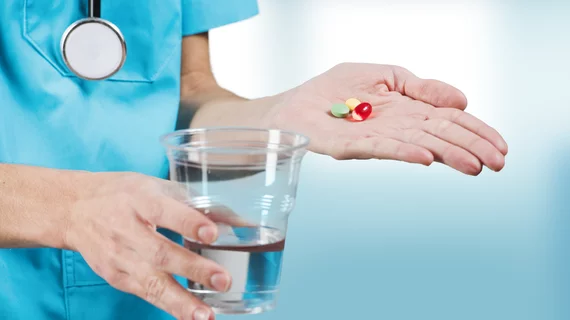Hospitals deeply impacted by rising drug prices
Americans are concerned about higher drug costs impacting their wallets, but hospitals and health systems have also been feeling the pinch, according to a recent study from hospital groups including the American Hospital Association.
The study examined how prescription drug prices rose from 2015 to 2017 along with the overall impact on hospitals and health systems facing higher costs.
Hospital and health system spending
Per-capita spending on drugs in the nation reached new year-over-year growth levels in 2014 and 2015––12.4 percent and 8.9 percent, respectively. The spending growth was not driven by higher utilization, but higher prices. When prescription drug prices rise, hospitals and health systems take a hit.
Total hospital and health system drug spending increased on average 18.5 percent from fiscal years 2015 to 2017. Growth in Medicare hospital payment rates and growth in general healthcare expenditures did not keep pace with the increases in inpatient and outpatient drug spending during this time period.
Overall medical inflation during this period was 6.4 percent, according to the study. Spending on outpatient drugs rose 28.7 percent, while inpatient drug spending rose 9.6 percent from 2015 to 2017.
While spending growth increased, hospitals were facing drug shortages––about 80 percent found it “extremely challenging to obtain drugs in short supply,” the report found.
The prices of some drugs from 2015 to 2017 fluctuated significantly more than others, largely due to market changes and competitors, including:
- Activase, a drug used to treat heart attack (increased 18.8 percent)
- Immunosuppressants (increased between 15 percent and 21 percent)
- Hepatitis C drugs (price drop of 15 percent in 2017)
“While these examples address drugs with the highest total spend, there are many other drugs that are critical for patient care that have experienced price increases,” the report noted.
For example, the price of a common pain reliever, hydromorphone, more than doubled over the three-year period.
Budget impacts
When drug prices rise, hospitals have to manage their budgets for these changes. Those involved in bundled payments do not see immediate changes in CMS payments as a result of higher drug prices.
Roughly two-thirds of respondents in the study said drug price changes had a moderate or severe impact on their budgets. More than 15 percent of hospitals indicated their budgets were impacted “to a large extent.”
As a result, hospitals have had to take different approaches to control spending, including day-to-day operational shifts and system-wide strategies. For many, these efforts were ongoing and continuous.
Nearly all reported taking some measures to control spending:
- 90 percent identified alternative therapies
- 69 percent did more in-house compounding
- 28 percent delayed investments or replacement of equipment
- 25 percent reduced staffing
- 17 percent reduced services offered
Drug shortages also had an impact, with some hospitals doing more frequent rounds to deliver smaller amounts of medication and avoiding unnecessary waste. Pharmacy departments also reported using a pharmacist in appropriate situations rather than a skilled pharmacy technician. Other health centers reduced services as a result of higher outpatient drug costs, making continued operations unstable, the report noted.
Shortages also led to higher spending for almost 80 percent of respondents, with more than 75 percent stating challenges obtaining drugs from 2015 to 2017. Some of the drugs in short supply included:
- Opioid injectables
- Saline
- Sodium bicarbonate
- Sterile water
- Epinephrine
- Dextrose
Hospital departments dealing with shortages tended to increase staff hours to find drugs and figure out optimal value for purchases.
“One vice president reported that staff spend 16 additional hours a week solely focused on managing inventory,” the report found.
Above all, these challenges impacted the ability of physicians to spend time on patient care.
While the Trump administration has introduced initiatives that could increase competition in pharma, the impact of new entrants had a minimal impact on spending, according to the report. Among the top 10 drugs by total spending in 2017, only two had a generic or biosimilar enter the market the year before, with the average price change being just 4.1 percent. Of the remaining eight without a competitor, the average price change was 14.4 percent.
The study was conducted by the AHA, the Federation of American Hospitals, the American Society of Health-System Pharmacists and NORC, using survey data, informational interviews with hospital and health system executives, and pricing and spending data from two group purchasing organizations.

